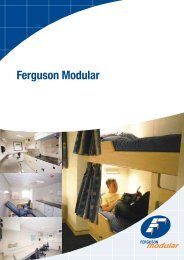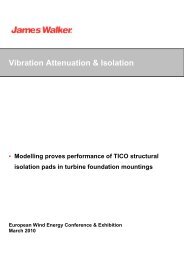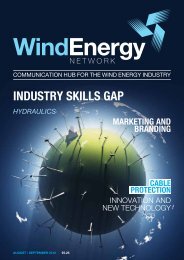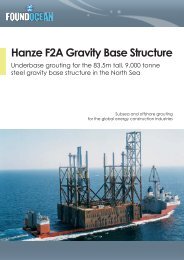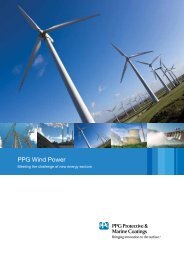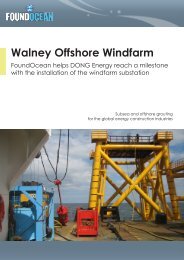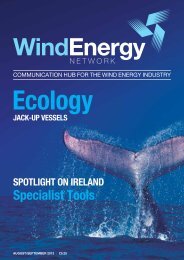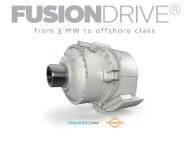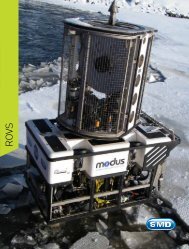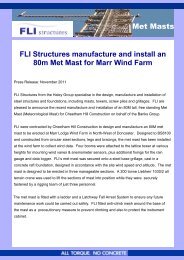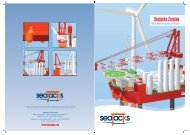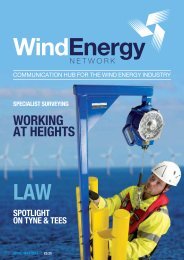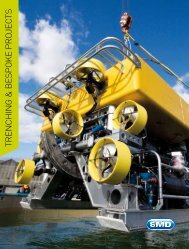JUNE/JULY 2013 | £5.25 - Wind Energy Network
JUNE/JULY 2013 | £5.25 - Wind Energy Network
JUNE/JULY 2013 | £5.25 - Wind Energy Network
You also want an ePaper? Increase the reach of your titles
YUMPU automatically turns print PDFs into web optimized ePapers that Google loves.
developments in foundation technologydevelopments in foundation technologyReducingthe costs ofwind farmjacketsthroughsteeloptimisationOffshore wind turbines are playing anever-increasing role in governments’aims to continue transitioning to a lowcarboneconomy. Renewable energy isone of the most cost effective methodsof producing power in the long run,once the capital costs of the initialdesign, manufacture, assembly andinstallation have been reconciled.Expanding developmentsThe UK is committed to producing 15%of its energy from renewable sourcesby 2020 and to meet this demand,manufacturers are continuously strivingto produce wind turbines with increasingpower outputs. <strong>Wind</strong> farms are beingdeveloped in larger numbers, deeperwaters and further offshore and thisalmost inevitably requires a move awayfrom monopile construction to otheralternatives.Structural designWith a long-standing presence andsignificant technical expertise in the globalrenewable energy and power sector, TataSteel has reviewed the factors affectingthe structural design of offshore windturbine platforms, which is a significantpart of the initial capital expenditure, andhas invested in new routes to supporteconomical serial jacket production.With targets for cost per kilowatt-houralready set, Tata Steel has looked athow to minimise all the incidental costsincluding manufacturing, installing andmaintaining an offshore wind turbine toachieve cost effective solutions.Standardisation andcollaborationDesign and assembly standardisationwill be important in ensuring economiesof scale within the sub supply chain.Small deviations from manufacturers’optimised steel tube sizes add significantadditional costs. Collaboration betweenthe designer, fabricator and steel supplierwill be required to ensure design integrityis optimised while maximising processefficiency and minimising costs.Displacing the current supply of bundlesof individual tubes by steel suppliers withcomplete point-to-point assemblies willenhance fabricator throughput. Paintedassemblies, incorporating pre-preparedmachined ends, will enable swift assemblyand welding by fabricators.Local supply and supply chainco-operationThe speed of local supplier reactivity withenhanced service level capabilities andreduced delivery lead times can enhancefabricator production efficiency andmitigate the potential for late deliveries.Additionally, moving high-density materialsis expensive, so local supply offerseconomic benefits.Co-operation with the wider supply chainis crucial in meeting the Government’saims for renewable energy. Steelmanufacturers can define the tubularmanufacturing process so large quantitiescan be produced at one time. They canalso customise the process, and supplytubulars that are prepared for fabricationinto finished structures. Preparation workincluding cutting-to-length, welding, shotblasting, coating and end-profiling helpshorten throughput times and improve costefficiency for customers, who can source allsteel components from a single supplier.Minimising costsTata Steel is confident that if the industryworks together throughout the supplychain it can enable cost effective designand minimise manufacture assemblyand installation costs. The use of localsuppliers to minimise finance tied up instock and transportation costs can alsohelp to support economical serial jacketproduction.Tata Steelwww.tatasteel.comClick to view more info44 www.windenergynetwork.co.ukwww.windenergynetwork.co.uk 45



